It’s a little wild that Hades and Returnal were released so close to each other.
Both are rogue-likes (i.e. games where deaths reset your progress, and you have to iteratively explore a changing world), both are heavily inspired by Ancient Greek mythology, both are fast-paced action games…hell, both of them feature feisty protagonists with short hair and heterochromia.


But despite these similarities, the two games couldn’t be any more different from each other. In terms of mechanics, aesthetics, and storytelling, Hades and Returnal diverge drastically.
Which leads to one boast that distinguishes Returnal: it actually manages to get out from Hades’ considerable shadow, and stand on its own.
And the first thing that sets it apart is movement.
Moving around in this game feels so goo-
Wait, hold on a sec.
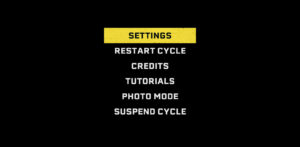


![]()
There we go.
Moving around in this game feels so goddamn good.
Specifically: Movement during combat has a very satisfying fluidity, once you get comfortable with it.
Contrary to many players’ normal instincts when the game floods you with enemy projectiles, the answer isn’t to hunker down and take stock of the situation. Instead, you need to keep moving. Similar to the combat in games like Control and Doom Eternal, no place is safe for long — so you’re better off dancing around the arena, while constantly applying pressure to your foes.
This is reinforced by the clever design of several early enemies. One throws a glob of sticky goo at your feet that does no damage, but makes you walk/run slower — immediately indicating that staying put is a bad thing — and the fastest way to get unstuck is to jump out of the goo and air-dash beyond its radius.
The shielded turrets that spawn far away from you need to be destroyed by an up-close melee attack, but the charge-up time for their guns is usually just long enough for you to make it to them and hit them first if you just immediately run right at them.
And the first miniboss-like enemy fires a stream of projectiles that chases you, and lasts a surprisingly long time — long enough that if you try to dash out of its path, you’ll probably get hit by it in that split second after a dash when you’ve momentarily stopped running. The lesson? You don’t always need to get fancy — sometimes you just gotta keep running.
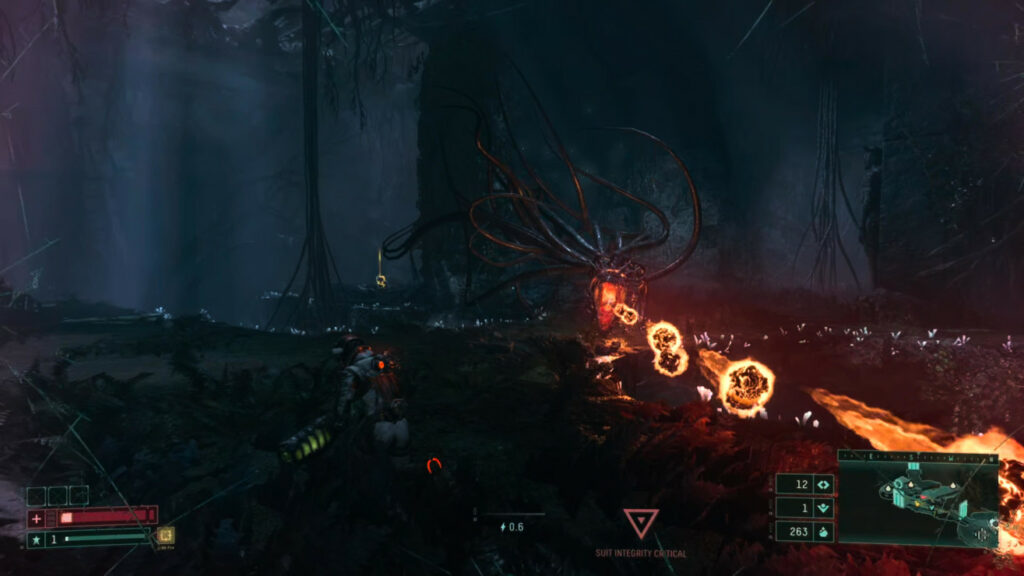
At the same time, almost nothing interrupts control of your character. You can run, jump, dodge, and dash all while aiming and firing your weapon continuously. Even during your reload animations, there’s a timed prompt you can hit to finish reloading faster.
When Returnal is at its best, you do not stop moving. Boss fights and challenge rooms become these balletic battles where there’s constantly something to react to — a reload prompt to hit, a melee attack to dodge, an incoming wave of projectiles to position yourself for — and it’s simultaneously overwhelming and encouraging.
Part of the key to this balance is that everything is brightly and loudly telegraphed. Lasers hum in crescendo Death Star-style as they get ready to fire, projectiles are almost always the brightest things on the screen, and different attacks are color-coded to help you keep track of them. It’s a little bit like Dark Souls meets Guitar Hero: there’s a lot coming at you, but you can always see it coming.
These fights are so cool that I find myself often going out of my way to re-challenge bosses, even when the safer thing would be to just move on to the next level.
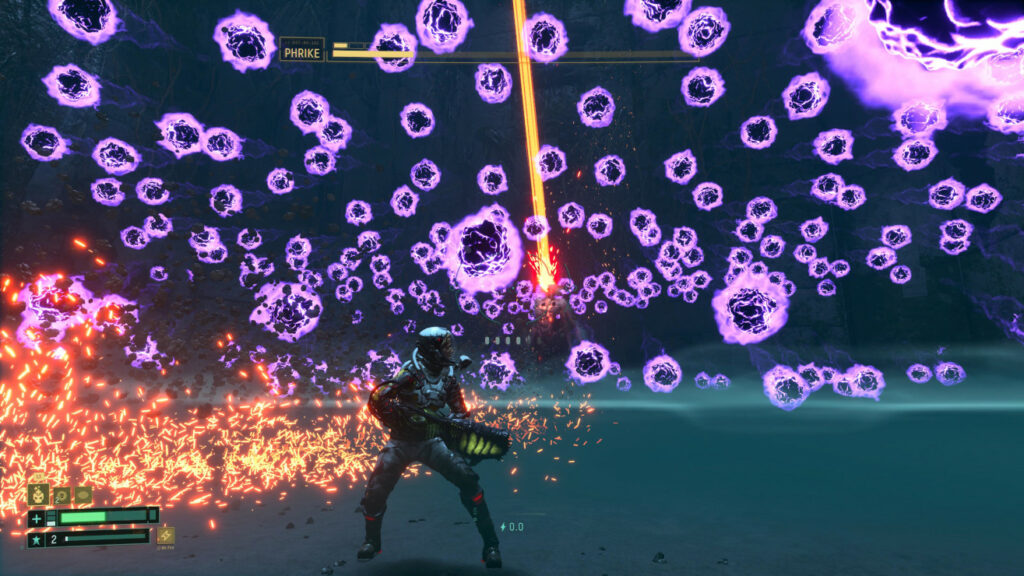
Tons of other games try to achieve this feeling of flow during combat, where it feels both propulsive and precarious. It reminds me a bit of the superhero beat-em-ups like Batman: Arkham City and 2018’s Spider-Man.
Like Returnal, these games swarm you with groups of enemies attacking in different ways, and constantly provide prompts to dodge/counter/block incoming attacks. As you continue to take out enemies without getting hit, your speed and damage increase until you are pinballing nonstop from one goon to the next.
But when you do get hit, all that momentum vanishes — suddenly you’re much slower, your attacks have much less stopping power, and there’s a good chance your next few actions are purely defensive so you can safely reposition and start over.
Combat in Returnal rarely suffers from that loss of momentum. Most hits from enemies don’t interrupt your attacks, and even fewer slow you down. You can keep on shmoovin’ right into your grave, as I’ve done many times when I was having so much fun with the combat that I failed to notice I was getting my ass kicked.
(That’s a good thing, by the way. It’s important for playing a game to feel good even when you’re dying, especially for a game like Returnal where you are expected to die frequently.)
Often, the most frustrating enemies in the game are those rare few whose attacks do stagger you. They tend to be particularly dangerous enemies, like minibosses that can melt you in just a few seconds of panic, but it’s the fact that they can actually halt you for even a moment that makes them feel really mean.
The speed and fluidity of movement feels particularly helpful for a rogue-like. Dying at the end of a long run is always discouraging, but that discouragement gets amplified when it takes longer to spin up the next run.
For example, look at Slay the Spire. It’s also an excellent game. But after you die, you get sent back to the title screen. You have to pick a game mode, then a character, then your starting boon, and then you start slogging through the first area again, gradually hoping to pick up the pieces to make your clunky starting deck begin to take off again. That’s a lot of spin-up time to get shmooving post-death.
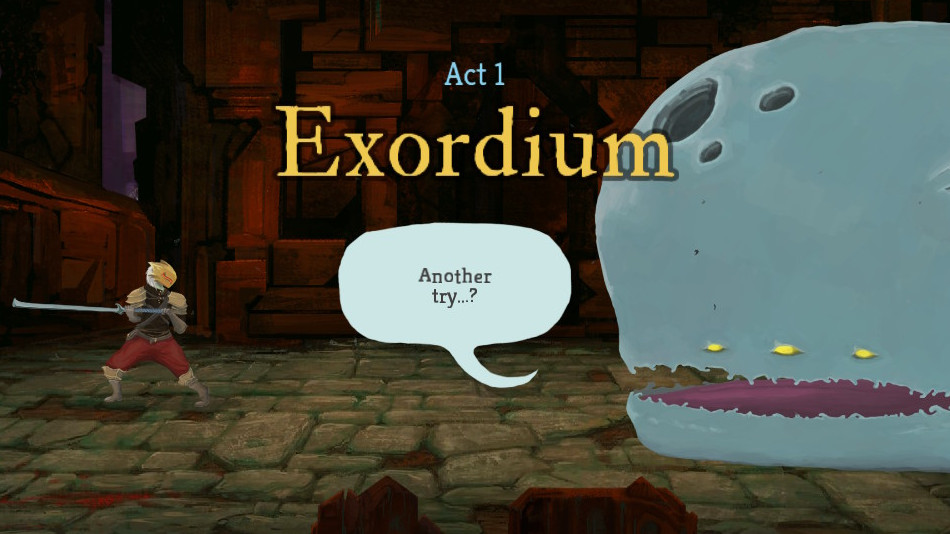
After you die in Returnal, you get a pair of brief cutscenes and you’re immediately back in it. Unlike Slay the Spire, combat is satisfying even with your starting gear (because a lot of the satisfying gameplay comes from the core mechanics, not from the “build” you assemble through upgrades), so the beginning of each run doesn’t feel as much like wearing lead shoes.
And Returnal even lets you choose to skip bosses, and eventually entire levels, once you’ve beaten them — so you can either grind up for more gear and buffs, or just race right towards the last thing that killed you.
Seconds after death, you’re already abandoning your crashed ship and running right into the first room full of enemies.
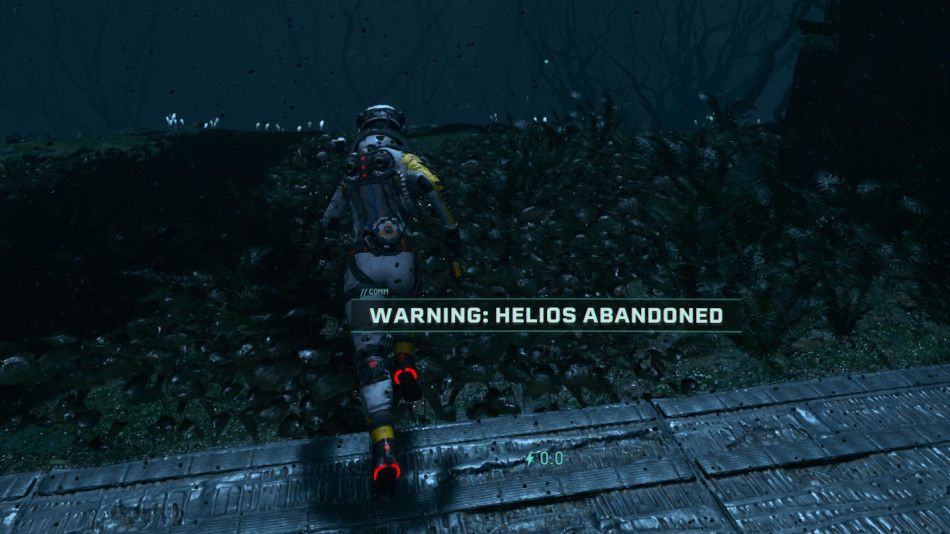
Yes, there’s a bit of the “argh ok ok one more try one more” phenomenon in any given rogue-like, and I’ll admit that I’m particularly susceptible to tilt-induced retry-addiction — but even so, I think that the mostly frictionless start-of-run flow and the fluid movement speed in Returnal combine to give you a sort of momentum that not every rogue-like has.
And this momentum is encouraging.
It feels like the world can’t stop you, only kill you. And that’s not enough.
Of course, that’s what the game is explicitly about. Without spoilers, here’s a quick rundown of the story:
In Returnal, you play as a space scout named Selene. While chasing a mysterious signal called the “White Shadow”, Selene crash-lands on an alien planet. She soon discovers that when she dies, some force re-creates her back at the site of her crash.
As Selene explores the alien world, she comes across the ruins of a fallen civilization, and begins to piece together what happened to them. She also comes across her own corpses, sometimes accompanied by audio recordings left by another version of her before she died.
Often, these recordings serve as tutorials. Other times, they elaborate the story of the game by sharing Selene’s inner dialog, explaining her interpretations of the world around her.
Sometimes, they are unhinged. One recording rambles about “divine punishment,” “ascension,” and “the transcendent watcher in the deep below.”
“I alone am worthy,” raves the Selene in the recording.
“What happened to…her?” mutters the Selene we control. “That was not me.”
For most of the game, this is the line between metaphor and reality. Cutscenes, audio logs, and visions might be confusing — but the world you explore and shoot things in is concrete. Things are explainable.
As the game goes on, though, that line erodes. The Selene you control sounds more like the Selene in the audio logs. Metaphor intrudes on reality. And the images and sounds from your visions start to haunt you outside your head. A song you heard on the radio. A child’s toy. An old astronaut suit.

It’s pretty surprising (and kinda refreshing) for a game with as much production value and mainstream appeal as Returnal to be so deliberately opaque and poetic. There are written passages in the game that feel as challenging to pick apart as some of its boss battles. It’s the kind of game that occasionally has me looking up obscure Pelasgian mythology, to try to figure out the additional meaning behind enemy and character names.
I usually think of Returnal as an action rogue-like, but it could also accurately be called an art horror game. Or even a…psychological shooter? It’s weird in some fairly bold ways for its market (i.e. high-profile near-launch titles for a new console), and it makes some striking choices that I’m going out of my way not to even hint at here.
This progression from concreteness to metaphor emphasizes one of the general themes of Returnal: degradation. Selene’s journey is a spiral. The more of her own corpses she pushes past, the harder it becomes to keep things in a neat, causal order — and this confusion makes “progression” feel almost indistinguishable from “falling apart.”
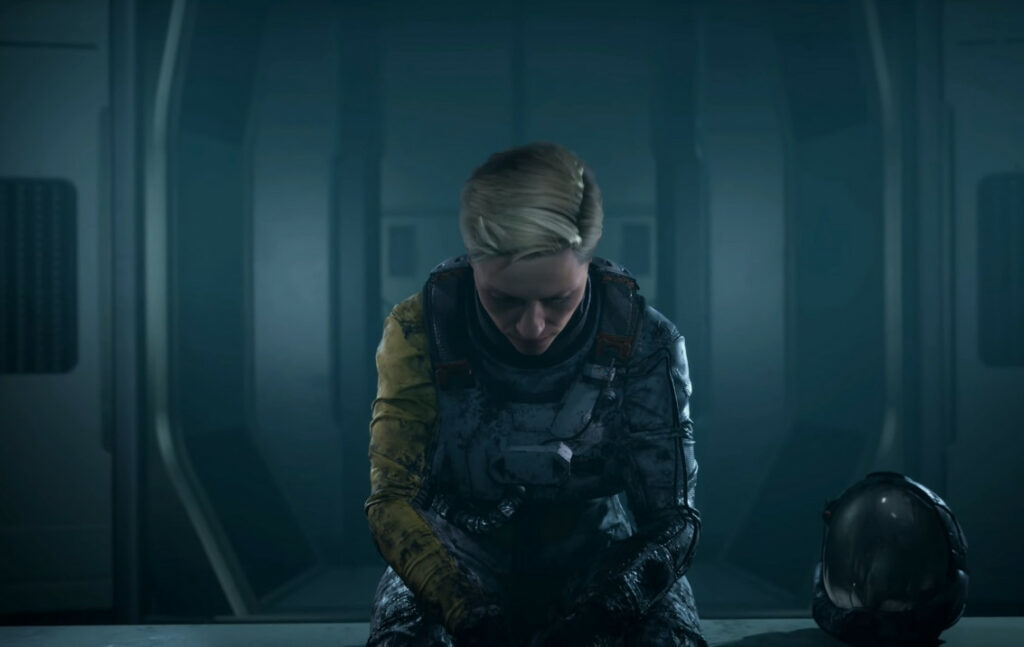
Unfortunately, players experience this spiral in some ways that are less than ideal. The final level, in particular, feels like the low point of the game.
It’s pretty common for games to “take away your toys” in their last levels, by confronting you with enemies/obstacles that counter the strategies you had relied on until that point. If you’re used to knocking down enemies with headshots, a game might throw you some foes wearing helmets. If you’re used to stealth kills, it might give you some brawlers to fight in wide-open and well-lit arenas.
But there’s a balance that needs to be struck here between “advancing the challenge” and “undermining what makes the game fun”. And I think a handful of design choices in Returnal’s last level push it more towards the latter.
In the final level, your movement becomes floaty and clumsy. At the same time, it’s full of bottomless pits to avoid. Combined, these two factors hobble the game’s otherwise ultra-fluid movement: your sprinting around the arena gets interrupted by sliding into a hole pretty often, and the added slipperiness of your controls makes it feel less like the game is trying to test your precision and more like it’s telling you to slow down — in direct opposition to what had been making the game great up until that point.
This level also starts to work a lot less like the 3D bullet hell that makes most of the game unique. Platforming often becomes more important than navigating a curtain of bullets, as you’re trying to avoid falling into pits while figuring out where to go and where the enemies are. And one particular type of enemy that’s common in this zone has a habit of flying at you swiftly from waaay off-screen — emphasizing reaction speed much more heavily.
In a way, this level highlights some of the challenges of making a fully 3D bullet hell, such as the added difficulty in being able to see the whole pattern and read it accurately while the player simultaneously controls the limited camera and moves around in the space. Unfortunately, it mostly shows you how the earlier parts of the game handled these challenges better.
The mechanics and enemy designs in this part of the game are (mostly) defensible in a vacuum, and they’re reasonable choices to test the player’s mastery at the end of a fast-paced third-person shooter. But it’s a little disappointing, and a little frustrating, that the final stretch of Returnal emphasizes the things it has in common with other games rather than the things that make Returnal stand out.
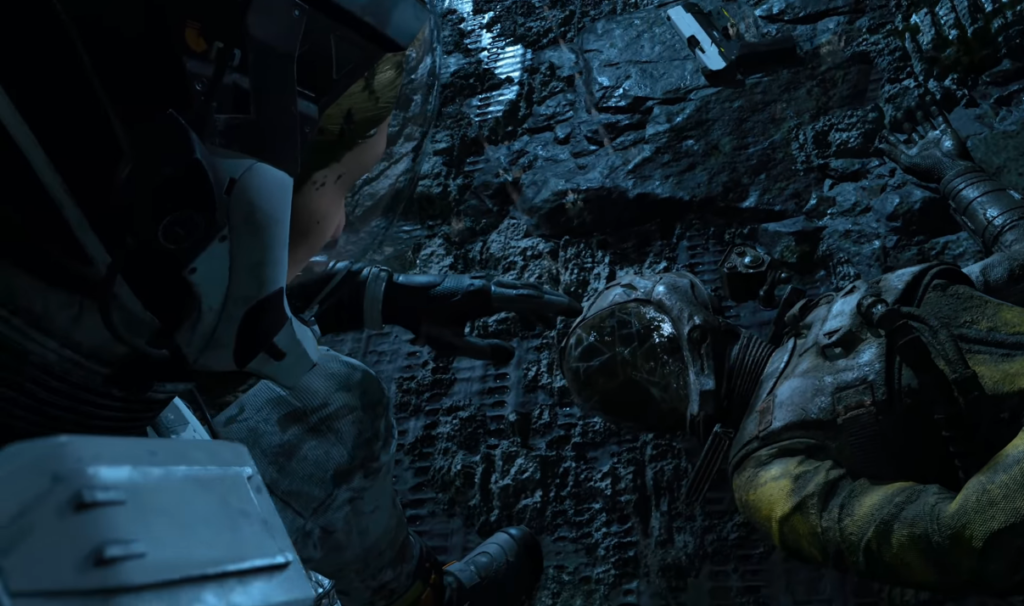
A lot of this — the downward spiral, the trudging progression, struggling to hold your ground — is probably intentional.
While Hades is about rising, Returnal is about sinking.
The culminating moments in Hades feel triumphant, and the reward for breaking through its challenges are moving emotional climaxes. People who love Hades make fanart set to cathartic lyrics like “I’m gonna make it through this year if it kills me.”
You don’t really see any Returnal fanart like that. On the other side of each breakthrough in Returnal are breadcrumbs, an inward spiral of reflection, and the growing realization of how all the moments in your past led, inexorably, to all the moments in your future. There’s a reason the game’s tagline is “Break the cycle.” It’s not optimistic; it’s desperate.
This isn’t a bad choice. It is, in its own ways, an equally powerful message, and well-communicated by the game’s story and mechanics. The themes of Returnal are crafted artfully and with intent.
But the biggest risk when you’re trying to convey a feeling of despair, of circling-the-drain instead of making progress, is that you succeed a bit too much.
Alongside some frustrating mechanics and design choices towards the end, the increasing metaphorization of Returnal’s story adds to the feeling of struggling to get a solid foothold, and can lead to a general motivational drain. The final level has its moments, but I definitely had to drag my feet across the finish line there.
Fortunately, the reward is suitably cool.
The final boss rocks in all the ways the other bosses rock, and the “ending” gives you some answers and even more questions. That might be annoying if you were expecting a more traditional tying-everything-up-with-a-bow conclusion, but it’s endearing — maybe even captivating — if you can accept Returnal for what it is.
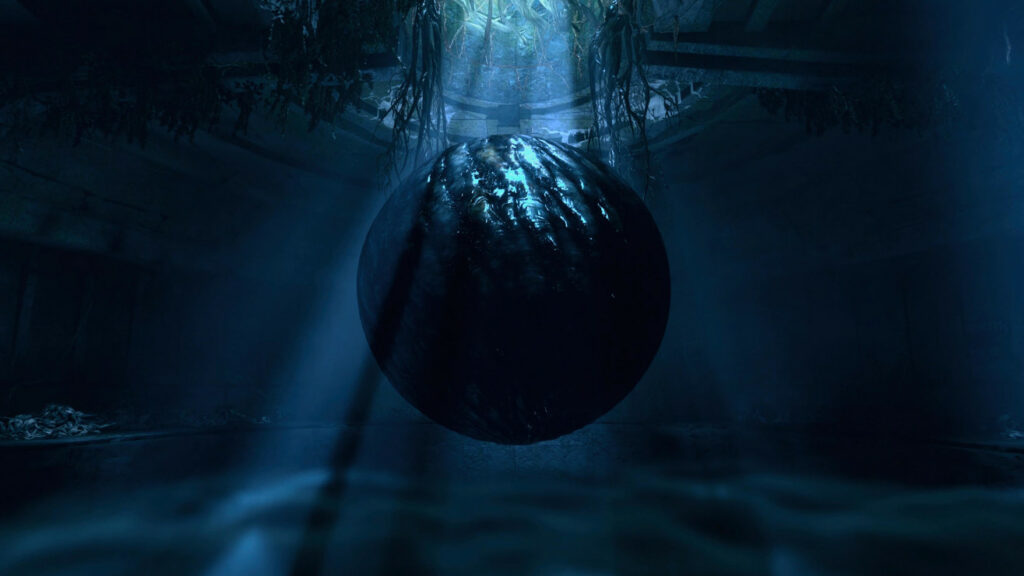
In a lot of ways, the fact that Returnal is a rogue-like helps save it from the pitfalls of its final chapter. After all, rogue-likes aren’t about ending. (At least, not the current generation of endless-play rogue-likes.) Even if you find yourself struggling like I did to get through that last level, you’re not stuck entirely in that level.
Being forced to “start over” after each death means you get to re-experience the parts of the game you enjoy the most, whenever you want. You can beeline to the final level, or you can explore every nook and cranny of the previous ones, hoping to amass enough upgrades and buffs to be able to finally crest that hill.
Although I’ve spent a few hundred words harping on the game’s shortcomings, the fact that the silver lining on the final chunk is “at least you get to play the rest of it over and over again” should emphasize just how solid the rest of the game, and even the game as a whole, still is.
Returnal is a game about perpetual motion, and I’ll probably always have some appetite to pick up the controller, wake up from my crashed ship, and just start running again.
Just watch your step in that last bit.
Mani Cavalieri is a New York City-based writer, media critic, and your pale cousin who’s into reptiles. He publishes regular essays on media – from game reviews to gushing about how cool that weird Godzilla movie is – over on Eyez ‘n Teef (which you can also follow on Twitter, for all the trivia and toast recipes that don’t make it into full-length posts). He loves sharing cool things you didn’t know, and he WILL talk your ear off about them.

